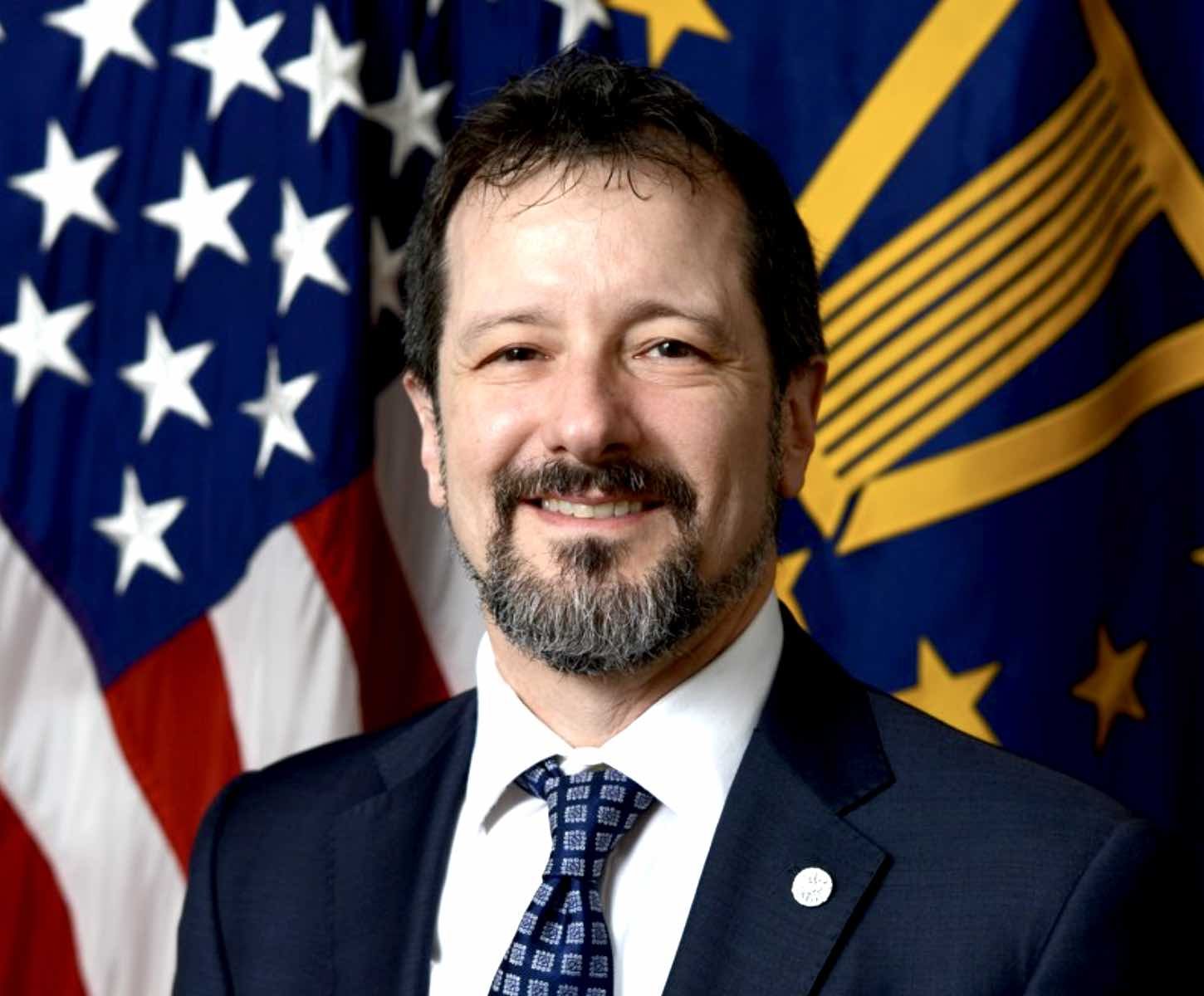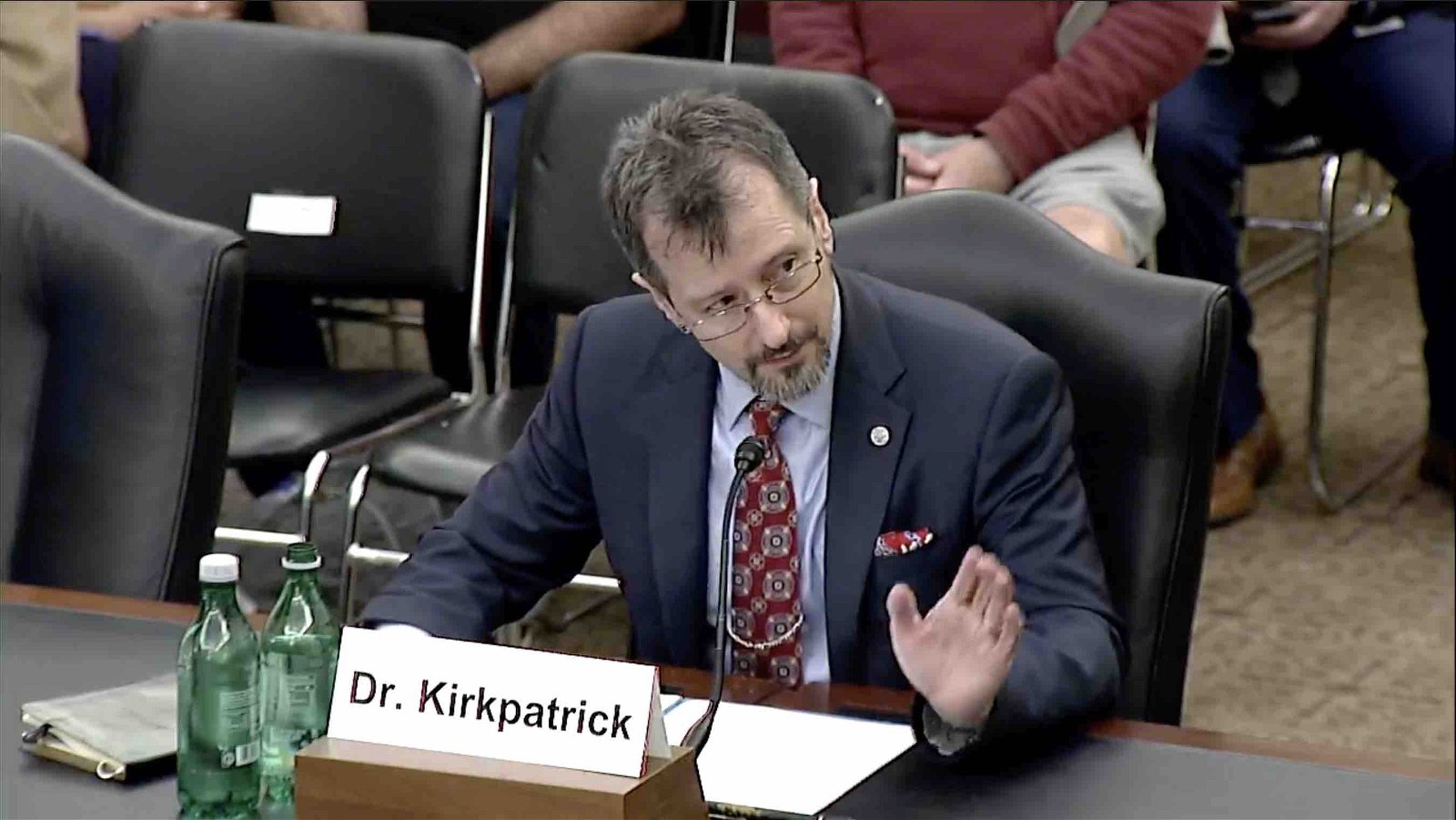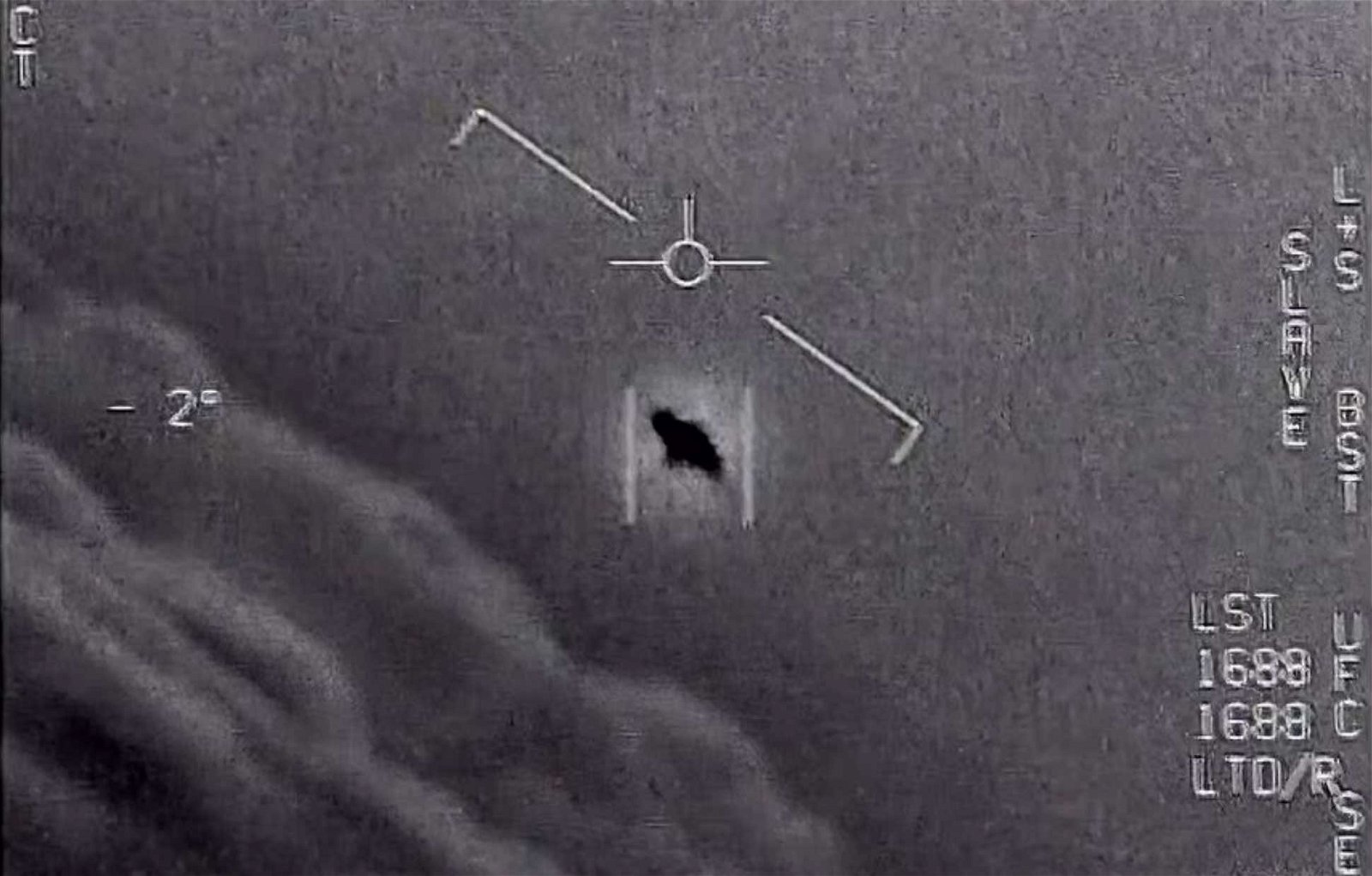

Welcome to this week’s installment of The Intelligence Brief… recently, the Pentagon’s former chief UFO investigator, Dr. Sean Kirkpatrick, spoke out about his time investigating anomalous phenomena for the Department of Defense, statements that erupted in controversy. In our analysis of the ensuing tumult, we’ll be looking at 1) why Dr. Kirkpatrick says that misinformation and “conspiracy driven decision-making” is impacting society, and the study of UAP, 2) what the reactions to the government scientist’s recent statements had been, as well as several reasons he cites for leaving his position with AARO, and 3) why, despite reasons for sympathizing with Kirkpatrick on several points, many of his latest arguments about UAP are less than convincing.
Quote of the Week
“Science cannot be left on the side of the road in the mad dash to uncover some great conspiracy. Carl Sagan would expect no less, and neither should the American people.”
– Sean Kirkpatrick
Latest News: In recent coverage from The Debrief, German researchers have unexpectedly discovered time reversibility in glass, while in South Florida, the cause behind a mysterious noise that has perplexed residents of South Tampa, could soon be revealed. You’ll find links to all our recent stories and other items at the end of this newsletter.
Podcasts: In podcasts from The Debrief, on The Debrief Weekly Report, Kenna and Stephanie descend into the darkest depths of the underworld, also known as South Dakota, and do combat with the “Hell Chicken,” a new ancient creature that roamed during the Cretaceous. Elsewhere, this week on The Micah Hanks Program I provide an in-depth look at the recent controversy surrounding the DoD’s former chief UAP investigator. You can get all of The Debrief’s podcasts by heading over to our Podcasts Page.
Video News: In the latest installment of Rebelliously Curious, Chrissy Newton is joined by computer scientist Jaques Vallée for an in-depth discussion about the intersection between AI and the U.S. government’s studies of UAP. You can check out this, and other great content from The Debrief on our official YouTube Channel.
Now, it’s time we dig into the recent statements made by Sean Kirkpatrick, who led the efforts of the DoD’s All-domain Anomaly Resolution Office until last December, and why his views on the U.S. government’s involvement with UAP have erupted in controversy.
Misinformation, Conspiracies, and UAP
Misinformation and decision-making by officials influenced by conspiracy-oriented thinking and sensationalism are “eroding” our capacity for critical thinking, “with deleterious consequences for our ability to effectively deal with multiplying challenges of ever increasing complexity,” according to Dr. Sean Kirkpatrick, the physicist and career intelligence official who stepped down from his position as the head of the Department of Defense’s All-domain Anomaly Resolution Office (AARO) in December.
Kirkpatrick, in other words, was for a short time the Pentagon’s chief UFO hunter. Based on recent admissions made by the government scientist, who is now employed at Oak Ridge National Laboratory, his time studying what the U.S. government now calls unidentified anomalous phenomena (UAP) wasn’t a very pleasant experience.
Writing in an opinion and analysis piece for Scientific American on January 19, Kirkpatrick said that he “experienced this erosion up close and personal,” even going so far as to it was a factor in his decision to leave his position as Director of AARO last year. Kirkpatrick also left little room for speculation about his current attitudes toward UAP, as well as several prominent advocates for its study.


In the Scientific American piece, Kirkpatrick charged that his team’s efforts “were ultimately overwhelmed by sensational but unsupported claims that ignored contradictory evidence yet captured the attention of policy makers and the public,” resulting in what the scientist characterized as a “whirlwind of tall tales, fabrication and secondhand or thirdhand retellings” of claims that fostered unrest on social media and occupied the time and focus of lawmakers and defense officials.
“[A]s if we didn’t have anything better to do,” the former official added. Understandably, the article provoked the ire of the many who closely follow the UAP subject, placing Kirkpatrick at odds with those who believe the government knows more about the subject than it lets on, as well as several former government officials who remained unnamed in the article.
Shots Fired on Social Media
“I left my job in protest, others leave in shame,” read a posting on X by former U.S. Army Counterintelligence Special Agent Luis Elizondo, who has remained a prominent advocate for disclosure of government information related to UAP since leaving his employment with the Department of Defense.
Also expressing critical views of Kirkpatrick following the publication of his Scientific American piece had been Travis Taylor, Ph.D., a physicist employed with the Huntsville, Alabama-based Radiance Technologies and a television personality known for his appearances on History’s The Secret of Skinwalker Ranch.
“[AARO] was a farce to shovel the manure back into the manufacturer and the public doesn’t realize it,” Taylor wrote as part of a lengthy comment on LinkedIn directed at Kirkpatrick, to which the former AARO director publicly responded.
“It is the conspiracy laden accusations that detracts from that serious endeavor,” Kirkpatrick fired back at Taylor during the exchange.
In fairness, one can’t help but feel at least some degree of sympathy for Kirkpatrick, who now admits that the melee ensuing mostly on social media over the last several years regarding the U.S. government’s handling of UAP had been a factor in his decision to step down as Director of AARO. Following his missive in Scientific American, Kirkpatrick appeared on the podcast In the Room with Peter Bergen, during which he shared a story about “an emotionally disturbed person that had showed up on my property and had stayed there overnight,” whom Kirkpatrick’s wife encountered.
“So that was a bit unnerving,” Kirkpatrick told Bergen. “But they got him and arrested him.”
However, one also comes away from reviewing the former AARO director’s recent statements with the distinct feeling that the same man who once said he would, as a physicist, “have to adhere to the scientific method,” and “will follow that data and science wherever it goes” when it comes to UAP has now essentially made up his mind, and downplays even some of the best unresolved cases AARO has investigated.


“The best thing that could have happened in this job is I found the aliens and I could have rolled them out,” Kirkpatrick told Beren on his podcast, “but there’s none. There is no evidence of extraterrestrials. There is no evidence of aliens and there’s no evidence of the government conspiracy.”
Even the most perplexing unresolved anomalies his office studied—“two to five percent of all the reports” in AARO’s collections, by his own estimates—Kirkpatrick now says are likely to have prosaic explanations, and certainly aren’t evidence of aliens.
“What is more likely: that [an] adversary has come up with a new technology that is based off of current state of the art that you didn’t know about, or we have extraterrestrials? Or even simpler than that, what’s more likely, the fact that there is a state-of-the-art technology that’s being commercialized down in Florida that you didn’t know about?”
Unconvincing Arguments
The reference to technology in Florida has to do with balloons Kirkpatrick references at one point during the podcast, some of which he says “are tic tac shaped” and also have “various different types of lights and they’re helium filled.”
“When we talk to the company, they’re like, yeah, we lose ’em,” Kirkpatrick told Bergen, though he provided no information about specific cases where one of the unnamed company’s balloons has ever escaped, let alone having been investigated by AARO and determined to have been mistaken for a tic tac shaped UAP.
“After calling the company, I found Kirkpatrick’s statement to be implausible,” wrote Marik von Rennenkampff, a former analyst with the U.S. Department of State’s Bureau of International Security and Nonproliferation in a recent OpEd for The Hill.
Another potential explanation Kirkpatrick offered Bergen involved fighter pilot sightings of spherical objects that appear to contain a cube, as first described in a New York Times article in 2019. The former Pentagon UFO hunter says these could be a new variety of drones “with eight thrusters in a cube configuration,” which he says can be easily maneuvered, and “they’ve tried these all over the place.”
Here again, Kirkpatrick only provides an anecdotal reference to this technology, and examples that appear online mostly involve drones designed only for indoor use. Presently, no evidence has been provided that shows these nascent spherical drones have been deployed, for instance, within controlled military airspace off the U.S. East Coast, and could have led to sightings by fighter pilots and other military personnel.


In closing, Kirkpatrick lamented to Bergen that he doubts he will ever be able to convert those who wish to believe that some UAP—perhaps only a small number—could represent something truly extraordinary.
“[T]here is absolutely nothing that I’m going to do, say, or produce evidentiary that is going to make the true believers convert, if you will,” Kirkpatrick said. “It is, it is basically a religion, and it is a religious belief that transcends critical thinking and rational thought.”
Promoting Rationality, or Just Part of the Problem?
Kirkpatrick may be correct to assert that there is currently no physical evidence that has surfaced that explicitly links even a minority of UAP sightings to extraterrestrial technology. However, in fairness, the government scientist also appears to be unconscious of the sudden, sharp shift in his own attitudes: having once appeared during Senate hearings and before NASA panels as a sober, objective scientist offering examples of both knowns, and unknowns that his office had studied–as well as good data in support of the conclusions AARO investigators had made–he now offers mostly one-sided, dismissive remarks with virtually no evidence supporting his asserted “solutions” to some of the most widely-discussed U.S. military encounters with UAP.
Fundamentally, Kirkpatrick says AARO’s job has been to try to bring the study of UAP back down to Earth.
“A lot of this is [to] de-sensationalize this problem,” Kirkpatrick told Bergen. “It’s to put objective, fact based, scientific method and reporting and analysis and, Disclosure of that information into a routinized manner to normalize the discussion so that it’s not sensationalized and so that it’s normal and, and eventually boring.”
Unfortunately, based on his most recent statements, few—if any—of the anecdotes Dr. Kirkpatrick has offered appear to meet his own stated standards; something that is disheartening to observe, given the initial promise foreshadowed by the scientific approaches Kirkpatrick seemed to desire to bring to the study of UAP with his direction of AARO’s investigations.
Instead, while his office’s objectives may have been aimed at reducing sensationalism and making discussion about UAP “normal and, and eventually boring,” it seems the rhetoric and anecdotes the Pentagon’s former chief UFO investigator has offered recently have had the opposite effect. For now, Dr. Kirkpatrick only appears to have further stoked the fires of controversy surrounding this beleaguered topic, thereby diverting attention away from the serious investigation and analysis of the phenomena at the heart of this debate.
That concludes this week’s installment of The Intelligence Brief. You can read past editions of The Intelligence Brief at our website, or if you found this installment online, don’t forget to subscribe and get future email editions from us here. Also, if you have a tip or other information you’d like to send along directly to me, you can email me at micah [@] thedebrief [dot] org, or Tweet at me @MicahHanks.


Here are the top stories we’re covering right now…
- What’s That in the Night Sky? Photographer Captures Rare, Perplexing Phenomenon in Striking New Images
A rare natural electrical phenomenon was recently captured in images of the night sky over Iceland’s Kerid Crater.
- The Road to Hell Chickens is Paved With Good ‘Egg-tentions.’ This week on The Debrief Weekly Report…
Kenna and Stephanie descend into the darkest depths of the underworld, also known as South Dakota, and do combat with the “Hell Chicken,” a new ancient creature that roamed during the Cretaceous.
- Cutting-Edge Analysis of the Winchcombe Meteorite Confirms Presence of Life-Supporting Organic Compounds
Researchers using a high-resolution electron microscope have confirmed the presence of organic compounds within the Winchcombe meteorite without the use of any chemicals.
- First Ever Successful Measurement of Material Aging in Glass Reveals Unexpected Time Reversibility
While making the first-ever direct measurement of material aging, German researchers unexpectedly discover time reversibility in glass.
- A Mysterious Noise is Aggravating South Florida Residents. Here’s How One Woman is Working to Find Out What’s Causing It.
The cause behind a mysterious noise that has perplexed residents of South Tampa, Florida, could soon be revealed, with help from a crowdfunded effort to fund scientific investigations into its cause.
- Game-Changing ‘Flightline of the Future’ Leverages Augmented Reality for Transmission of Sensitive Military Aircraft Data at High Speeds
Northrup Grumman and its partners have unveiled a new system that facilitates the secure transmission of sensitive, classified military data at high speeds.
- Rare Sighting Captured in Photos Reveals an Ocean ‘Monster’ You’ve Never Seen Like This
Researchers have captured the first images of an infant great white shark, a discovery that could solve a longstanding mystery about this enigmatic species.
- Starfield, Xbox, and the European Space Agency Are Giving Away a Real-Life Spacesuit
Starfield creator Bethesda Game Studios, Xbox, and the European Space Agency are giving away a customized spacesuit to whoever comes up with the best design.
- James Webb Space Telescope Captures Amazing New Images of 19 Distant Spiral Galaxies
NASA’s James Webb Space Telescope (JWST) has captured a stunning new series of near- and mid-infrared images that depict 19 nearby spiral galaxies in vivid detail.
- “Chimera” Metamaterial Achieves Previously Impossible Multi-Terrain Invisibility
A metamaterial that incorporates the camouflaging capabilities of three different animals successfully achieves the first-ever multi-terrain invisibility.
- Discovery of ‘Obelisks’ Reveals an Entirely New Class of Virus-Like Agents in Our Bodies
An international team of researchers has revealed the existence of a previously unrecognized variety of virus-like agents that reside within the human body.
- Chances That Odd Soil Samples Collected at Mars’ Jezero Crater Contain Signs of Ancient Life Just Increased Dramatically
New analysis of the subsurface features beneath Mars Jezero crater dramatically increases the chances the Perseverance rover’s soil samples contain signs of ancient life.
- Department of Energy-Funded Ultrafast Lithium Battery Charges in Just Five Minutes
A team of Cornell University researchers funded by the Department of Energy say they have invented a new lithium battery that can be fully charged in just five minutes.
- ‘Strategic Location’ For Future Base at the Lunar South Pole is Being Rocked by Mysterious Moonquakes, NASA Images Reveal
A NASA-funded study of a key strategic location on the Moon has revealed the presence of moonquakes and faults near the lunar south pole.
- Human-Sized “Hell Chicken” Roamed The Earth Millions of Years Ago, New Paleontological Research Finds
Scientists have unearthed a new ancient species with a name straight out of a B-movie: the “Hell Chicken.”
- NASA’s Hubble Space Telescope Has Made “a Landmark Discovery” in the Atmosphere of This Small Exoplanet
NASA’s Hubble Space Telescope has made “a landmark discovery” through observations of the atmosphere of a tiny distant exoplanet.
- Ingenuity Helicopter Ends Its Historic Mars Mission, as NASA Reveals What Finally Grounded the First Aircraft to Fly on Another Planet
NASA has announced that the Ingenuity helicopter has formally concluded its mission on Mars, following dozens of successful test flights during its three-year tenure on the planet.
- Evidence of 45,000-Year-Old Advanced Material Culture Discovered in North China
Evidence of an advanced material culture that once thrived 45,000 years ago in Asia has been discovered in North China, according to an international team of archaeologists.
- NASA’s Scout System Just Predicted an Asteroid Impact. Here’s What That Means for Planetary Defense.
This week, NASA’s Scout impact assessment system succeeded in calculating the trajectory of an asteroid that entered Earth’s atmosphere over Germany.
- The Quickening
This week on The Micah Hanks Program, we are joined by author Whitley Strieber, who discusses the role of the experiencer in the UAP equation.
- Something is Orbiting These Distant Exoplanets After All, According to Researchers Who Fire Back Over Exomoon Controversy
Have we discovered Exomoons? Recent news of moons orbiting planets outside our solar system has sparked debate in the astronomical community.
- People Living in the Andes 9,000 Years Ago May Completely Redefine Our Understanding of Hunter-Gatherers
Isotopic analysis reveals people living 9,000-6,500 years ago in the Andes Mountains were not hunter-gatherers as previously believed.
- Did This Biomedical Sciences Professor Just Discover the Fountain of Youth?
Researchers specializing in aging and cellular senescence say they may have found a real-life fountain of youth hiding within our own bodies.
- Darwin’s Theories About Life on Earth Gain Fresh Support, May Aid the Search for Life on Other Worlds
A new study by researchers from the University of Washington is lending fresh support to Charles Darwin’s idea that the origin of life on Earth began in phosphate-rich bodies of water.